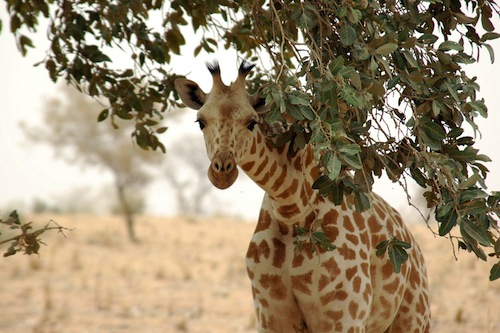 Intelligent Design
Intelligent Design
New Book: Wolf-Ekkehard Lönnig on the Giraffe’s Neck

We’ll have more to say on this, but check out a fascinating new title from our friend and ENV contributor Wolf-Ekkehard Lönnig who is a Senior Scientist, Department of Molecular Plant Genetics, Max Planck Institute for Plant Breeding Research (retired). The book is The Evolution of the Long-Necked Giraffe (Giraffa camelopardalis L.) What do we really know? Testing the Theories of Gradualism, Macromutation, and Intelligent Design.
From the book’s Amazon page:
“Darwin (1871) and many African folk legends before him […] proposed a simple but powerful explanation for the large and elongated shape. Long necks allowed giraffe to outreach presumed competitors, particularly during dry-season bottlenecks when leaves become scarce;…” (Simmons and Scheepers). However, this old African folk legend which is still commonly taught in high schools, fails to explain, among other things, the size differences between males and females. Giraffe cows are up to 1.5 meters shorter than the giraffe bulls, not to mention the offspring. The wide migration range of the giraffe and the low heights of the most common plants in their diet likewise argue against the dominant selection hypothesis. Also: 1) The fossil “links”, which according to the theory should appear successively and replace each other, usually exist simultaneously for long periods of time. 2) Evolutionary derivations based on similarities rely on circular reasoning. 3) The giraffe has eigh t cervical vertebrae. Although the 8th vertebra displays almost all the characteristics of a neck vertebra, as an exception to the rule the first rib pair is attached there. 4) The origin of the long-necked giraffe by a macromutation is, due to the many synorganized structures, extremely improbable. 5) Sexual selection also lacks a mutational basis and, what is more, is frequently in conflict with natural selection (“head clubbing” is probably “a consequence of a long neck and not a cause”; see also Mitchell et al. 2009). 6) In contrast to the thus-far proposed naturalistic hypotheses, the intelligent design theory is basically testable. 7) The long-necked giraffes possibly all belong to the same basic type inasmuch as 8) a gradual evolution from the short-necked to the long-necked giraffe is ruled out by the duplication of a neck vertebra and the loss of a thoracic vertebra. 9) Chance mutations are principally not sufficient to explain the origin of the long-necked giraffe. 10) The intelligent design theory offers an adequate and satisfying solution to the problems and points to numerous “old” and new research projects. 11) Mitchell and Skinner present a good analysis of the selectionist problem; however, their phylogenetic hypotheses presuppose the correctness of the synthetic evolutionary theory, and their claims of “intermediate forms” are unproven (similarly summary Part 2). Part 1 shows why Dawkins and Kutschera are wrong. The scientific facts speak for design.
Image: West African Giraffe, Wikipedia.
